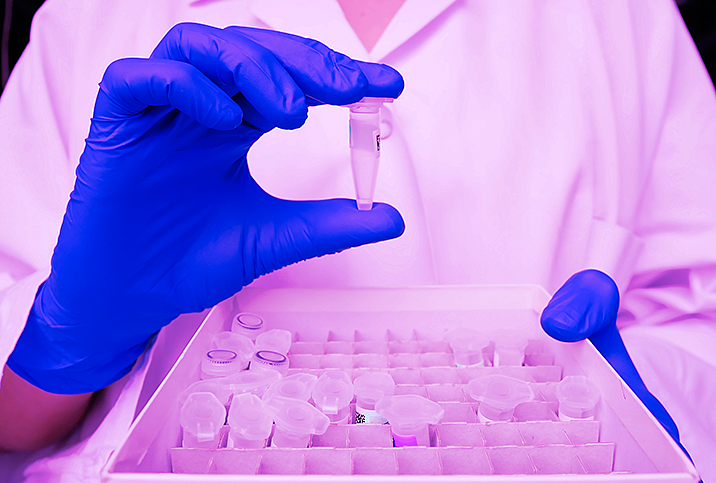Symptoms and Diagnosis of Prostate Cancer

Prostate cancer is one of the most common types of cancer that men face, with 288,330 expected to be diagnosed in 2023, and nearly 35,000 expected to die from it, according to the American Cancer Society (ACS).
While some men aren't diagnosed with prostate cancer until they show symptoms, about 85 percent of cases are detected using early screening tests.
An overview of prostate cancer
Part of the male reproductive system, the prostate is positioned in front of the rectum at the base of the penis and below the bladder. One of its main functions is to make fluid for semen, which is essential to supporting, protecting and transporting sperm.
The prostate is wrapped around the urethra, which transports urine and semen through the penis. The prostate naturally tends to get larger as men age, which leads to issues such as benign prostatic hyperplasia (BPH), prostatitis and, especially in men older than 50, prostate cancer.
Risk demographics
In the general male population, ACS stats show about 1 in 8 men will be diagnosed with prostate cancer in their lifetime. For male military veterans, the rate of diagnosis is 20 percent. This higher incidence of prostate cancer could be linked to exposure to herbicides, such as Agent Orange (a defoliant used during the Vietnam War), and to lower early mortality rates among American veterans.
Black American men get prostate cancer at almost twice the rate of white American men and have more than double the risk of dying from prostate cancer as white men. Research suggests this disparity may be related to health care. Black men may not get screened for prostate cancer as early or as often as white men because they are not aware they should or because they do not have equitable access to adequate healthcare resources.
In recent years, community healthcare educators and medical facilities have worked diligently to ensure Black men know more about prostate cancer and receive routine screening to lower the incidence of death from it.
Prostate cancer is curable, and the five-year survival rate for men whose prostate cancer is detected and treated early is almost 100 percent.
Since men older than 50 have an elevated risk of developing prostate cancer, they should be screened regularly by their primary care physician, even if they don't show symptoms.
Early detection and early treatment of prostate cancer are critical to a complete recovery and a lower risk of recurrence. If you wait until you have symptoms of prostate cancer, your cancer could be advanced (metastatic), at which point the five-year survival rate drops to about 30 percent.
Importance of yearly prostate exams
After age 50, you should undergo an annual prostate exam. Prostate cancer screening is based on a risk-benefit ratio and a shared discussion between the urologist and the patient. Men between the ages of 50 and 79 have the highest incidence of prostate cancer among all males, and the average age for a prostate cancer diagnosis is 66.
A yearly prostate exam can, if cancer is found, help keep it localized (just within the prostate) or regional (in the prostate and possibly the seminal vesicles or adjacent lymph nodes), and not let it get to the distant stage (where it has metastasized to other parts of the body like the lungs, bones and liver).
Localized and regional prostate cancer treatments are usually successful, and the five-year survival rates are close to 100 percent.
A prostate exam is made up of two distinct tests. The first is a digital rectal exam (DRE), which consists of your primary care physician inserting a lubricated, gloved finger into your rectum to do a physical examination. If your prostate has any physical abnormalities (swelling, soft or hard masses, or misshapenness), your primary care physician will be able to feel them.
The second part of your prostate exam will be a blood test to check the levels of prostate-specific antigen (PSA). Results typically come back within two weeks.
The PSA test consists of analyzing how much prostate-specific antigen is in your bloodstream. Abnormal levels of PSA in your blood are determined based on the rate of increase in 12 months or your age:
- If your current PSA level is elevated more than 0.35 nanograms per milliliter from your previous year's PSA level, then you have an abnormal PSA level.
- If you are between the ages of 40 and 59, an abnormal PSA level is higher than 2.5 nanograms per milliliter.
- If you are 60 or older, an abnormal PSA level is higher than 4 nanograms per milliliter.
What are the symptoms of prostate cancer?
You might have an abnormal PSA level without experiencing any of the symptoms associated with prostate cancer. In fact, it is not unusual for someone to be diagnosed with prostate cancer without having any symptoms. This is often good news because it increases the chances your prostate cancer is localized or regional, and that it can be successfully treated.
However, you might not have your PSA levels checked until after you begin experiencing symptoms of prostate cancer, the most common of which are divided into three types: lower extremities, urinary, and ejaculatory and/or erectile.
Lower extremity symptoms are common with prostate cancer. They include persistent pain or stiffness in your upper thighs, lower back or hips, and/or edema in your thighs, calves or feet.
Urinary symptoms are also common with prostate cancer and may include:
- Having a difficult time starting or stopping urine flow
- Feeling frequent urges to urinate, especially at night
- Experiencing pain or a burning sensation when you urinate
- Having blood in your urine
Ejaculatory and/or erectile dysfunction can also point to the presence of prostate cancer. Symptoms may include:
- Difficulty achieving and maintaining an erection
- Pain when you ejaculate
- Less ejaculatory volume
- Blood in your semen
How is prostate cancer diagnosed?
Early diagnosis of prostate cancer can play a key role in the successful outcome of your treatment. If a DRE reveals physical prostate abnormalities and your PSA levels are above normal (whether or not you are manifesting symptoms related to prostate cancer), your urologist will probably order additional diagnostic tests for prostate cancer.
Most often, the first test will be an ultrasound of the prostate gland, which creates an image doctors can use to see whether there are tumors in your prostate. You may also undergo a biopsy of your prostate, where a sample of prostate tissue is taken for cellular analysis, which is used to definitively diagnose the disease.
Your prostate tissue will be examined by a pathologist who will look for cancer cells. If found, they are graded according to their size and how numerous they are compared to normal prostate cells.
While common, biopsies of the prostate can be risky, and possible complications may arise, such as:
- Prostate or urinary tract infections (UTIs)
- Blood in your urine
- Blood in your semen
- Blood in your rectum
Because of the potential side effects, your urologist will usually prescribe an antibiotic for you to take before and after your prostate biopsy.
Diagnosing prostate cancer involves several mechanisms; the DRE, PSA blood test and biopsies aren't the only tools. Your urologist may order a urine sample to have tested for the prostate cancer 3 (PCA3) gene, since elevated quantities of this gene in urine can indicate the presence of cancer in your prostate.
Determining prostate cancer aggression and spread
Your urologist will use an instrument called the Gleason Score to grade your cancer. Developed by pathologist Dr. Donald Gleason during the 1960s after he realized cancer cells have five unique patterns when they are morphing from normal cells into tumor cells, the Gleason Score first looks for the two most dominant cell patterns in your prostate biopsy. Each pattern is assigned a grade, and then the two grades are added to get your score.
A total score between 6 and 10 indicates the presence of prostate cancer, with 6 being the lowest grade of cancer and 10 the highest. This score will then be put into a Grade Group to determine whether you have prostate cancer and, if you do, how advanced the cancer is. The Grade Group system is composed of five grades that evaluate cancer risk:
- Grade Group 1 has a Gleason Score of 6 or less, which indicates a very low to low-risk cancer.
- Grade Groups 2 and 3 have a Gleason Score of 7 (the addition of the two most dominant types of cells in your biopsy) and an intermediate-risk cancer.
- Grade Groups 4 and 5 have a Gleason Score of 8 to 10 and a high to very high-risk cancer.
The higher your Gleason Score and Grade Group, the more aggressive the prostate cancer is.
To determine whether your prostate cancer is contained or has spread, you'll undergo a full-body CT scan or an MRI.
How do you prevent prostate cancer?
There is no evidence prostate cancer can be prevented, but you can take some measures that may lower your risk of developing it. Eating a low-fat diet and limiting your intake of dairy products could help reduce your prostate cancer risk, as may regular exercise and maintaining a healthy weight.
If you have a family history of prostate cancer, especially in immediate relatives, early and regular prostate exams can help lower the risk of prostate cancer and help prevent it from reaching an advanced stage.


















